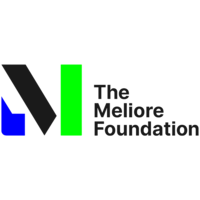Fast, Secure Global Payments Anywhere
Send thousands of payments around the world in a matter of clicks.
Global Payments Features
No Borders, No Barriers
With unmatched flexibility, security, and transparency, Tipalti streamlines payment processes, reduces manual effort, and helps you efficiently manage global transactions as you grow.
Global Payment Execution Made Easy
Say goodbye to data entry across multiple bank portals, costly overhead, and extra fees. Schedule payments in multiple countries and currencies using different methods—all in a single application. Tipalti automatically remits to payees using all payment methods with no interaction required by your staff.
- Trigger payments from invoices, payment file upload, or the Tipalti API
- All payment status and data from each payment method are reconciled, normalized, and can be sent to ERP
- Eliminate the need to hire to meet payables needs as you grow
Global Coverage, International Payment Methods
Whether you’re paying suppliers, contractors, freelancers, publishers, affiliates, or creators, Tipalti can handle it. A self-service portal guides payees through choosing their preferred payment method and collects banking details.
- Our global payments system executes payments to 200+ countries in 120 local currencies
- Six international payment methods—ACH, global ACH (local bank transfer), wire transfer, PayPal, and paper cheque
- Automatically validates supplier data in real time using 26,000 global banking rules to eliminate payment errors.
- No phone calls, emails, or faxes by your finance staff
- Flexible and secure global payments backed by our money transmitter licences
Advanced Payment Configuration Options
Want to eliminate paper cheques? Sick of costly wire transfers? Want to avoid uneconomical small payments?
- Use transaction fees to incentivise payees to choose the most cost-effective payment methods
- Use payment thresholds to hold payments until a specified minimum amount is reached, improving cost margins on transactions
Payment Transparency Throughout
Looking to reduce calls to your payables department? Proactive payment status communications keep payees informed when payments are processed, and when (and why) they fail. Payees can also view their complete payment history in an online portal, freeing your team from hours spent on issue resolution.
- Payees are alerted if additional information is required to process payment, if tax forms need to be updated, and more
- All payment communications and self-service portal access are white-labelled so that your brand stays front and centre, helping you to build trust with your payees
Enterprise-Grade Financial Controls
Protect the funds that are leaving your organisation. Instituting strong internal controls is critical to scale payment operations. Enforce delegation of authority, segregation of duties, and system access.
- Unlimited payment approvers, configurable workflows, and role-based access
- Audit trail logs capture user activity in the system, assuring you always have a record for auditability
Integrations
Pre-Built ERP Connections to Extend Automated Workflows
Easily extend and simplify your workflows with pre-built integrations and powerful APIs for your ERPs, accounting systems, performance marketing platforms, HRIS, SSO, Slack, credit cards, and more.
Customer Stories
Don’t just take our word for it,
see what our customers are saying
How It Works
Up and Running in Weeks, Not Months
Collaborative customer support with customised onboarding to get you operational quickly
Step 1
Plan
Kickstart your success with a comprehensive setup call that reviews your manual AP workflow, outlines the onboarding plan, validates technical configurations, and prepares for training.
Step 2
Configure
Customer onboarding experts configure Tipalti sandbox and production environments, test the hosted payee portal or embedded iFrame, execute sample payment runs, and establish integrations.
Step 3
Deploy
In-depth training for AP staff on the Tipalti Hub and the end-to-end AP automation functionalities, ensuring thorough knowledge transfer to turbocharge your successful launch.
Step 4
Adopt
Tipalti supports user adoption and change management during launch with the option to guide payees through onboarding too. Once set, you’ll be ready to fund your Tipalti Virtual Account, execute your first batch of payments, and officially launch Tipalti.
Step 5
Optimise
Following your setup, technical support teams are always available by phone and email, and the Tipalti customer success team will continuously advise you on achieving your goals.
Platform Features
Work smarter, not harder
With AI and machine learning capabilities, an intuitive UX, and quick and easy global payments, you can drive unprecedented efficiency.
Awards
#1 award-winning finance automation solution

2025 Inc. 5000 List of America’s Fastest-Growing Companies
Awarded to Tipalti for the 8th consecutive year

2024 Deloitte Technology
Fast 500
Awarded to Tipalti for the 7th consecutive year

2025 CNBC World’s Top Fintech Company
Digital Business Solutions Category

Spend Matters’ 50 to Know 2024
Awarded to Tipalti for the 5th consecutive year
Get Up and Running in Weeks, Not Months
Book a demo to get started today and take control of your finance operations with Tipalti.
Global Payments FAQs
What is an ACH payment?
An ACH payment (Automated Clearing House payment) is an electronic transfer of funds processed through the ACH network in the United States.
The ACH network enables the direct transfer of money between bank accounts and financial institutions without needing paper checks, wire transfers, or credit cards.
There are two types of ACH payments:
- ACH credit is where the payer initiates the transaction, sending money to the recipient’s bank account (such as direct deposit, government benefits, or refunds).
- ACH debit is where the recipient initiates the transaction by pulling funds from the payer’s account (e.g., recurring bill payments such as utilities, loans, or subscriptions).
What is the best payment method for global payments?
The best payment method for global payments will vary depending on factors like:
- Speed
- Transaction size
- Cost
- Currency conversion
- Multi-currency needs
- Regulatory requirements
Some of the most common and effective global payment types include:
Wire Transfers
Wire transfers are a financial vertical that works best for large, high-volume payments. It’s focus is on simplified pricing and creating a good customer experience.
Global ACH/Local Bank Transfer
These are cross-border payment methods that vary by country. For Europe, it’s the Single Euro Payments Area (SEPA); in the UK, it’s the Bankers’ Automated Clearing System (BACS); and in Canada, it’s an electronic file transfer (EFT).
Digital Wallets Like PayPal
This method will optimise the small to medium-sized business and freelancer ecosystem. It can also be used in an omnichannel strategy and combined with other payments partners or merchant services.
Global Payment Solutions Like Tipalti
Tipalti is a cloud-based software solution that can handle all of these payment methods in a single platform (just as if you were at a point of sale in person). It’s a unique payment experience like nothing else!
Alternative Payment Methods
- Global ACH
- Credit card (like Visa or Mastercard)
- Card payments
How do you transfer money from a local bank to an international bank?
Transferring money from a local bank to an international bank can be done in several ways. Still, the most common and reliable methods include:
Wire Transfers
This is the most traditional and widely used method for international bank transfers.
Step #1: Gather Recipient’s Data
You’ll need:
- Recipient’s name
- Recipient’s bank account number (or IBAN in certain countries)
- SWIFT/BIC code
- Bank name and address
Step #2: Visit Your Bank
Most banks offer international wire transfer services via their in-store branch or online banking portal.
Step #3: Start the Transfer
Fill out the bank form or online transfer request with the recipient’s data, the amount, and the currency. Depending on the country, you may also need to specify the reason for the transfer.
Step #4: Pay the Fees
International wire transfers usually incur a fee, typically $15–$50, plus exchange rate fees.
Step #5: Wait for Payment Processing
Wire transfers take 1–5 business days to process, depending on the banks and countries involved.
International Payment Platforms
These payment services often provide a cheaper, faster alternative to traditional bank transfers.
Step #1: Sign Up for a Payment Provider like Tipalti
Platforms like Tipalti or PayPal are designed for international payments and typically offer better exchange rates.
Step #2: Link Your Bank Account
You must link your local bank account or credit/debit card to fund the transfer.
Step #3: Enter the Recipient’s Bank Data
Provide the recipient’s bank information (such as IBAN or SWIFT code).
Step #4: Choose the Currency
Before confirming the transaction, most platforms will show you the exact exchange rate and fees.
Step #5: Complete the Transfer
Depending on the payment technology, the recipient may receive the real-time payment within minutes or up to a few days.
How does Tipalti help prevent AP fraud?
Tipalti is a fintech company that conducts “Do Not Pay” blacklist screenings prior to processing payments, utilising integrated fraud detection to prevent fraudsters from concealing their identities. It screens payees against national blacklists such as OFAC, the EU, and HMC to block suspicious individuals.
What makes Tipalti a reliable and secure platform?
Tipalti is a trustworthy partner for money transmission services due to several key factors:
Regulatory Compliance
Tipalti ensures compliance with stringent financial regulations across multiple regions and jurisdictions.
The brand adheres to anti-money laundering (AML), Know Your Customer (KYC), and sanctions compliance standards, safeguarding against fraud.
Fraud Detection and Risk Management
Tipalti offers advanced fraud detection tools, including “Do Not Pay” blacklist screenings and checks against major national and international blacklists (OFAC, EU, HMC).
These features help identify and block fraudulent actors, ensuring more secure transactions.
Global Payment Capabilities
Tipalti is a payment processor that supports payments in 120+ currencies across 200+ countries, providing cross-border flexibility. This makes it ideal for companies with a global supplier or contractor base.
Transparency and Security
In addition to global payment processing, Tipalti offers real-time transaction monitoring and comprehensive audit trails, providing transparency at every step of the payment process. The platform uses multi-factor authentication (MFA) and encryption technologies to ensure data security.
Which payment methods can I use with Tipalti’s global payment solution?
Tipalti’s global payment methods include:
- Wire transfers
- ACH
- Local bank transfer/ Global ACH
- Paper cheques
- PayPal
Each payment method has its benefits and drawbacks, and companies should choose a checkout experience that meets their needs for cost and efficiency while prioritising the satisfaction of the recipient.
The most optimal payment method often depends on a payee’s Location, regulations, and expectations.
Recommendations










